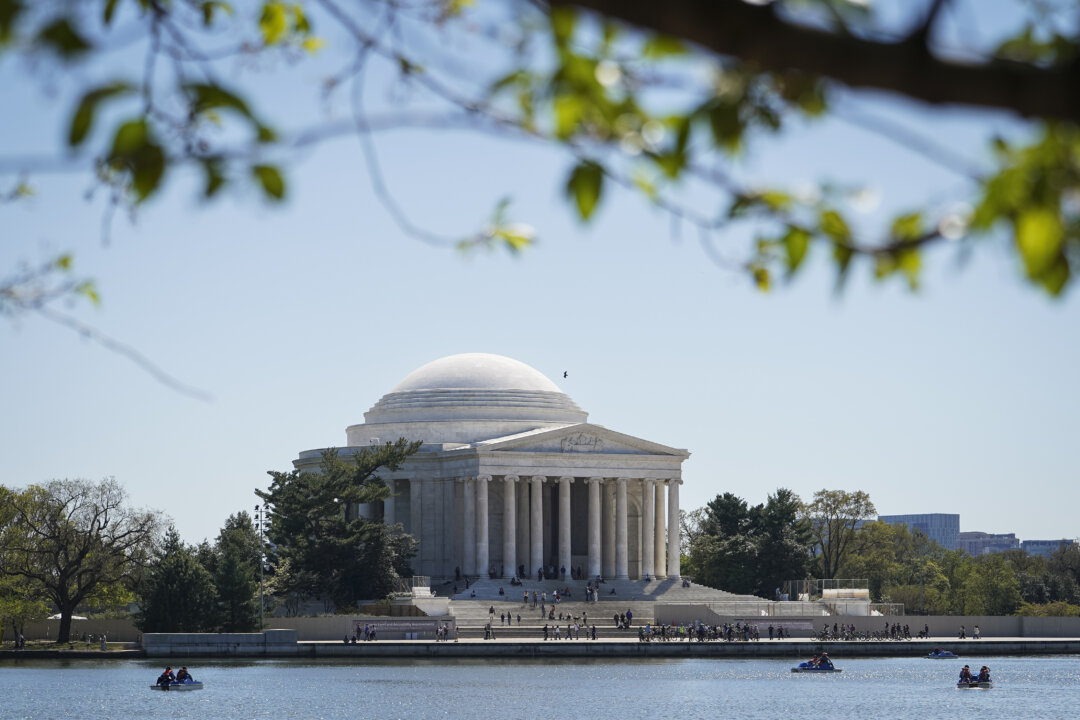LITTLE ROCK, Arkansas — The most consequential bipartisan accomplishment of this decade was hatched in NYU faculty housing and is being fulfilled in conservative and liberal state capitals alike. The legislative victory at hand? Banning phones in classrooms.
Until now, it has barely registered amid the tribal trolling that passes for a national political dialogue in the Age of Trump. But as the school year gets fully underway across the country this week, more parents may be able to identify Jonathan Haidt, or at least his groundbreaking book on the risk of children’s access to smartphones, than they can recognize their own member of Congress.
Go ahead, tell me another issue that has cracked the red-blue divide like Haidt’s crusade against smartphones in The Anxious Generation or name another book that has so quickly led to far-reaching reforms, such as banning phones in schools.
“Everyone is a parent, everyone has kids, that’s it — everyone sees this,” Haidt told me, by way of explaining why his work has unified policymakers of every stripe.
The statistics speak for themselves.
The Anxious Generation debuted as the top-selling, non-fiction book on the New York Times best-sellers list in March of 2024 and has remained on the list for the last 74 weeks — a Harry Potter-like longevity that, to put it mildly, is rarely accorded with works from PhD social scientists. This week, it’s back at number one.
39 states now have some sort of phone restrictions in schools, and 18 states and Washington, D.C. have bell-to-bell bans — which ban phones for the entire school day — according to Haidt. After the next legislative sessions, which in many state capitols begin after the new year, more states are sure to enact full bans. The issue has rallied conservatives and liberals, and its potency with parents has largely steamrolled libertarian objections and big tech lobbying.
I first realized a remarkable story was sitting in plain view when I witnessed two governors who are almost comically far apart on the political spectrum both embrace Haidt. Last year, Arkansas Gov. Sarah Huckabee Sanders sent a copy of Haidt’s book to every other governor. She then hosted Haidt in her home state before joining him earlier this year on stage at Davos, not typically a lovefest forum for Arkansas governors and New York academics.
Shortly after that, at the winter meeting at the National Governors Association, I got to talking to New Jersey Gov. Phil Murphy and one of his top aides, and they also were trumpeting Haidt’s work. A liberal, former Goldman Sachs executive turned northeastern governor, Murphy, 68, sounded a lot like his 43-year-old conservative counterpart from Little Rock.
Different regions, different politics and different generations.
And yet…
You probably already guessed it: Sanders is a mother of three and Murphy a father of four.
“I’m living this real time, right now,” Sanders told me over coffee earlier this year in the governor’s mansion, discussing her own kids in the same home she also spent most of her teen years as the daughter of a governor.
Ironically enough, she first came across the book by discovering a clip of Haidt on Instagram and quickly ordered a copy.
“Our parent friend group is in this ‘to phone or not to phone,’” she said. “It just was really top of mind.”
Murphy, in a separate interview, all but echoed Sanders.
“We’ve seen it with our own kids,” he said, adding: “I bemoan the fact that if we got bell-to-bell in New Jersey, and we had that 15 years ago, how that would have changed the trajectory of how our kids interact.”
Murphy, whose children are older than those of Sanders, had mutual friends with Haidt and had read some of his work. The two spoke on the phone, and it prompted the governor to, as he put it, “move from ‘Let’s study it, let’s let the school districts lead on this’ to, ‘You know what, I’m feeling like I want to put my thumb on the scale more.’”
Then came what Murphy called “a seminal visit” to a school in South Jersey, Woodbury Junior-Senior High School, which had already barred phones throughout the school day. “It didn’t just convert me to the cause, it converted me specifically from ‘no cellphones in class’ to bell-to-bell,” he recalled.
Why? In part because the visit made him recall Haidt’s research that in the last few minutes of class, students lose focus because of the “anxiety” of knowing they’re about to get their phones back.
I spoke to Murphy on the sidelines of the summer meeting of the National Governors Association, one of the last venues for bipartisan discussion — at least for those governors willing to sit through plenary sessions with the opposing tribe.
The daytime general sessions can be substantive but also somnolent. Yet when Tennessee Gov. Bill Lee cited Haidt’s book — “many of us have read the book The Anxious Generation” — heads quickly began nodding (and not because they were dozing).
Lee, a Republican, was joined on stage by Health and Human Services Secretary Robert F. Kennedy Jr., who quickly chimed in with a tone of wonder about what he had just witnessed visiting a school cafeteria in Loudoun County, Virginia, where there was a bell-to-bell ban.
“The kids are all talking to each other. They're not looking at their laps at a cellphone,” he said, noting that their relearned behavior also translates when the school day is over and parents find their children more engaged in the car and at the dinner table.
There’s something else at play that explains how quickly Haidt’s proposals have taken off — while phone bans have broken through the country’s polarization, it’s the same deepening partisanship that partly explains the idea’s success.
The bans speak to each party’s disdain for, and really fear of, the opposition.
Today’s right is animated almost wholly by backlash to the real and perceived excesses of the left, particularly on culture. And today’s left, or at least the balky anti-Trump coalition, is unified mostly by the perception that the right has lost its mind, what with the rise of QAnon and a number of other technology-borne rabbit holes.
Utah Gov. Spencer Cox, one of the earliest governors to embrace the Haidt cause, described it as the convergence of “the nostalgic piece, which tacks right, of ‘get back to the good old days, let kids play all day’” and the left’s alarm over “the crazy conspiracy stuff that happens.”
When I mentioned to Cox, a Republican, that the phone bans had the air of cigarette restrictions — it’s too late to save adult smokers, but perhaps we can save the next generation — he agreed but said there was a crucial distinction.
The difference, he said, is “we all thought, at least I did, that social media would bring us together, and it has been the exact opposite.”
It's not just the governors acting. Other countries are going even further. Australia, for example, has banned teenagers from social media entirely — and recently moved to include YouTube within that restriction.
Haidt is skeptical there will ever be similar, sweeping federal action in the U.S. But he said 20th-century history offers a lesson in how citizen advocacy can force marketplace action, too: Ralph Nader exposed the automobile industry’s resistance to safety features in his 1965 book Unsafe at Any Speed: The Designed-In Dangers of the American Automobile, which ultimately pressured the government to pass safety legislation and also prompted carmakers “to compete on safety,” as Haidt put it.
Hopefully, he said, social media companies will do the same.
“My hope is that someone will come up with a social network in which everyone is authenticated,” said Haidt.
For now, the focus remains on schools and phones. All 50 states have either passed bills or have pending legislation.
And the bulk of the credit goes to one mild-mannered professor on Washington Square, whose last name some of the governors didn’t even know how to pronounce when they first met him.
“He quite literally lit this issue up, scaled awareness and motivated all of us to move,” said California Gov. Gavin Newsom of Haidt.
.png)












 English (US)
English (US)